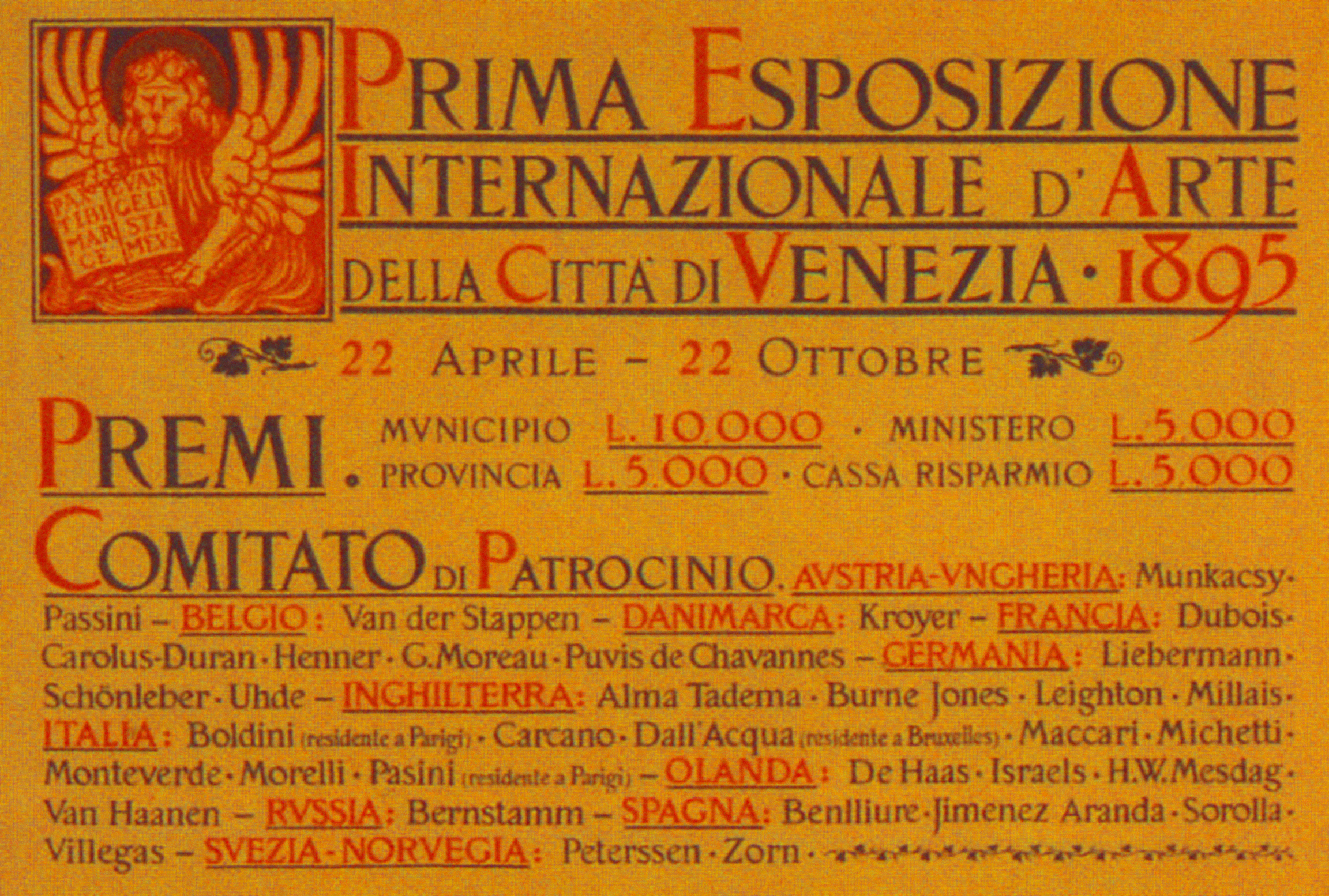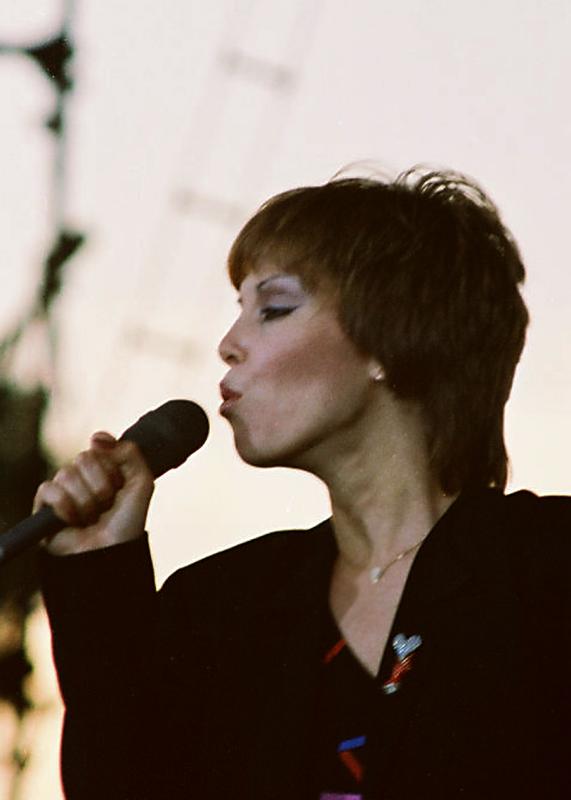|
Nina Ivančić
Nina Ivančić (born in 1953 in Zagreb, Croatia) is a contemporary Croatian artist working mainly in the mediums of painting and drawing. Background Nina Ivančić, daughter of Ljubo Ivančić, the famous Croatian painter and member of the artist group, "Group of 5", studied at the University of Zagreb Academy of Fine Arts under Professor Šime Perić. She is one of the key figures of the New Image painting movement which emerged during the 1981 Youth Salon which signalled a return to painting in the then Yugoslavian art. Key members of the New Image movement also include: Star Fio and Đuro Seder. Her works from the 1980s approach geometric abstraction and were made during her stay in New York (1986–1993). She is particularly known for her works from the 1990s where she used ships and airplanes as leitmotifs to explore the relationship of painting to art and technology in today's society which is reliant on modern medias.Medić, Ana - ''Nina Ivančić: 1980-2006'', p.17, (G ... [...More Info...] [...Related Items...] OR: [Wikipedia] [Google] [Baidu] |
Zagreb
Zagreb ( ) is the capital (political), capital and List of cities and towns in Croatia#List of cities and towns, largest city of Croatia. It is in the Northern Croatia, north of the country, along the Sava river, at the southern slopes of the Medvednica mountain. Zagreb stands near the international border between Croatia and Slovenia at an elevation of approximately above mean sea level, above sea level. At the 2021 census, the city itself had a population of 767,131, while the population of Zagreb metropolitan area is 1,086,528. The oldest settlement in the vicinity of the city was the Roman Andautonia, in today's Šćitarjevo. The historical record of the name "Zagreb" dates from 1134, in reference to the foundation of the settlement at Kaptol, Zagreb, Kaptol in 1094. Zagreb became a free royal city in 1242. In 1851, Janko Kamauf became Zagreb's List of mayors of Zagreb, first mayor. Zagreb has special status as a Administrative divisions of Croatia, Croatian administrative ... [...More Info...] [...Related Items...] OR: [Wikipedia] [Google] [Baidu] |
Croatia
Croatia, officially the Republic of Croatia, is a country in Central Europe, Central and Southeast Europe, on the coast of the Adriatic Sea. It borders Slovenia to the northwest, Hungary to the northeast, Serbia to the east, Bosnia and Herzegovina and Montenegro to the southeast, and shares a maritime border with Italy to the west. Its capital and largest city, Zagreb, forms one of the country's Administrative divisions of Croatia, primary subdivisions, with Counties of Croatia, twenty counties. Other major urban centers include Split, Croatia, Split, Rijeka and Osijek. The country spans , and has a population of nearly 3.9 million. The Croats arrived in modern-day Croatia, then part of Illyria, Roman Illyria, in the late 6th century. By the 7th century, they had organized the territory into Duchy of Croatia, two duchies. Croatia was first internationally recognized as independent on 7 June 879 during the reign of Duke Branimir of Croatia, Branimir. Tomislav of Croatia, Tomis ... [...More Info...] [...Related Items...] OR: [Wikipedia] [Google] [Baidu] |
University Of Zagreb Academy Of Fine Arts
The Academy of Fine Arts Zagreb ( or ALU) is a Croatian art school based in Zagreb. It is one of the three art academies affiliated with the University of Zagreb, along with the Academy of Dramatic Art (ADU) and the Academy of Music (MUZA). The Academy was established in June 1907 as the ''Royal College for Arts and Crafts'' () and initially had three departments, for sculpting, painting and art education. Academy's first professors were Robert Frangeš-Mihanović, Rudolf Valdec, Robert Auer, Oton Iveković, Bela Čikoš Sesija, Menci Klement Crnčić and Branko Šenoa. The Academy is still based in its original location at 85 Ilica street in Zagreb. Since 1926 the architecture department was briefly active at the academy, and was headed by Drago Ibler. The graphic arts department was established in 1956, the restoration department in 1997 and the department for animation and new media in 1998. Today the academy has six departments, with a total of 365 students enrolled. ... [...More Info...] [...Related Items...] OR: [Wikipedia] [Google] [Baidu] |
Nacional (weekly)
''Nacional'' is a Croatian weekly news magazine published in Zagreb. Founded in 1995 and owned by photographer and journalist Ivo Pukanić, ''Nacional'' quickly gained a reputation for reporting and critical articles about the conservative government led by the Croatian Democratic Union (HDZ), which was in power during the 1990s. During most of its existence its main rival was ''Globus (weekly), Globus'' published by Europapress Holding (EPH). History ''Nacional'' was launched in 1995 by Denis Kuljiš, Ivo Pukanić and other prominent journalists dissatisfied with the editorial policies of then popular weekly ''Globus (weekly), Globus''. Soon a bitter competition developed between two magazines, because they tried to grab the same readership and used the same techniques of investigative journalism. In 2000 Pukanić stepped down as editor-in-chief to oversee the launch of his short-lived daily ''Republika'', which was meant to compete with EPH's ''Jutarnji list''. ''Republika'' w ... [...More Info...] [...Related Items...] OR: [Wikipedia] [Google] [Baidu] |
Croatian Art Of The 20th Century
Croatian art of the 20th century, that is visual arts within the boundaries of today's Croatia, can be divided into modern art up to the Second World War, and contemporary art afterwards. Modern art in Croatia began with the Secession (art), Secession ideas spreading from Vienna and Munich, and post-Impressionism from Paris. Young artists would study the latest trends and integrate them into their own work. Many strove to bring a native cultural identity into their art, for example themes of national history and legends, and some of the artwork following the First World War contained a strong political message against the ruling Austro-Hungarian state. A change was noticeable in 1919 with a move to flatter forms, and signs of cubism and expressionism were evident. In the 1920s, the Croatian art of the 20th century#Earth Group, Earth Group sought to reflect reality and social issues in their art, a movement that also saw the development of Hlebine School, naive art. By the 1930s the ... [...More Info...] [...Related Items...] OR: [Wikipedia] [Google] [Baidu] |
Đuro Seder
Đuro Seder (29 November 1927 – 2 May 2022) was a Croatian painter. He lived and worked in Zagreb. Career At the beginning of his career he worked as an illustrator, image editor, and designer at various magazines. He was one of the founding members of the Gorgona Group, whose active members between 1959 and 1966 were Miljenko Horvat, Ivan Kožarić, Julije Knifer, Dimitrije Bašičević (who also worked under the name Mangelos), Matko Meštrović, Radoslav Putar, Marijan Jevšovar, and Josip Vaništa. During the Gorgona period he was more active in the group than with solo presentations, and his work was marked by the informel-influenced disintegration of form, negation of traditional painting techniques, and reduced use of colours, which can be seen for example in his works, ''Anonymous Form'', (1963) and ''Little Signs'' (1964). Seder also contributed to the group's publication of the same name, and wrote texts and poetry in the literary magazines ''Razlog'', '' Kolo'' and ... [...More Info...] [...Related Items...] OR: [Wikipedia] [Google] [Baidu] |
Venice Biennale
The Venice Biennale ( ; ) is an international cultural exhibition hosted annually in Venice, Italy. There are two main components of the festival, known as the Art Biennale () and the Venice Biennale of Architecture, Architecture Biennale (), which are held in alternating years (hence the name). There are also four additional components, each usually held on an annual basis, comprising , , Venice Film Festival, and Venice Dance Biennale. Between them they cover contemporary art, architecture, music, theatre, film, and contemporary dance. The main exhibition is held in Castello, Venice, Castello and has around 30 permanent pavilions built by different countries. The Biennale has been organised every year since 1895, which makes it the oldest of its kind. Since 2021, the Art Biennale has taken place in even years and the Architecture Biennale in odd years. History 1895–1947 On 19 April 1893, the Venetian City Council passed a resolution to set up an biennial exhibition of I ... [...More Info...] [...Related Items...] OR: [Wikipedia] [Google] [Baidu] |
Poreč
Poreč (; known also by several alternative names) is a town and municipality on the western coast of the Istrian peninsula, in Istria County, west Croatia. Its major landmark is the 6th-century Euphrasian Basilica, which was designated a UNESCO World Heritage Site in 1997. The town is almost 2,000 years old, and is set around a harbour protected from the sea by the small island of Sveti Nikola. Its population of approximately 12,000 resides mostly on the outskirts, while the wider Poreč area has a population of approximately 16,600 inhabitants. The municipal area covers , with the long shoreline stretching from the Mirna River near Novigrad (Cittanova) to Funtana (Fontane) and Vrsar (Orsera) in the south. Names Historically, Poreč or Parenzo has been known as or , and . History Roman period During the 2nd century BC, a Roman castrum was built on a tiny peninsula with approximate dimensions of where the town centre is now. During the reign of Emperor Augustus i ... [...More Info...] [...Related Items...] OR: [Wikipedia] [Google] [Baidu] |
1953 Births
Events January * January 6 – The Asian Socialist Conference opens in Rangoon, Burma. * January 12 – Estonian émigrés found a government-in-exile in Oslo. * January 14 ** Marshal Josip Broz Tito is chosen President of Yugoslavia. ** The CIA-sponsored Robertson Panel first meets to discuss the UFO phenomenon. * January 15 ** Georg Dertinger, foreign minister of East Germany, is arrested for spying. ** British security forces in West Germany arrest 7 members of the Naumann Circle, a clandestine Neo-Nazi organization. * January 19 – 71.1% of all television sets in the United States are tuned into '' I Love Lucy'', to watch Lucy give birth to Little Ricky, which is more people than those who tune into Dwight Eisenhower's inauguration the next day. This record is never broken. * January 24 ** Mau Mau Uprising: Rebels in Kenya kill the Ruck family (father, mother, and six-year-old son). ** Leader of East Germany Walter Ulbricht announces that ... [...More Info...] [...Related Items...] OR: [Wikipedia] [Google] [Baidu] |
Artists From Zagreb
An artist is a person engaged in an activity related to creating art, practicing the arts, or demonstrating the work of art. The most common usage (in both everyday speech and academic discourse) refers to a practitioner in the visual arts only. However, the term is also often used in the entertainment business to refer to actors, musicians, singers, dancers and other performers, in which they are known as ''Artiste'' instead. ''Artiste'' (French) is a variant used in English in this context, but this use has become rare. The use of the term "artist" to describe writers is valid, but less common, and mostly restricted to contexts such as critics' reviews; "author" is generally used instead. Dictionary definitions The ''Oxford English Dictionary'' defines the older, broader meanings of the word "artist": * A learned person or Master of Arts * One who pursues a practical science, traditionally medicine, astrology, alchemy, chemistry * A follower of a pursuit in which skill ... [...More Info...] [...Related Items...] OR: [Wikipedia] [Google] [Baidu] |




